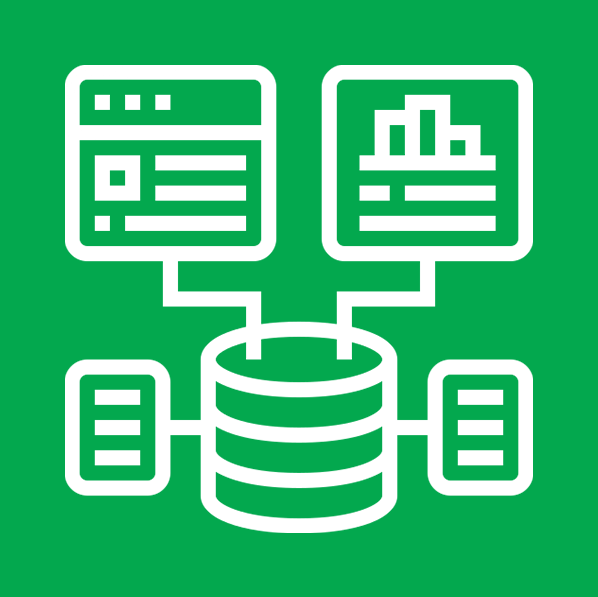Arwentech Cyber Security for better protection
Enterprise IT Management
Home > Enterprise IT Management

Full Stack Observability (FSO)
Full stack observability refers to the ability to collect and analyze data across all layers of a software application stack, including the infrastructure, network, application, and user interface layers.To achieve full stack observability, software teams typically use a combination of monitoring, logging, tracing, and analytics tools. These tools allow them to collect and analyze data from various
Read More
sources, such as application logs, metrics, network traffic, and user interactions, and to visualize and analyze this data in real-time.
Effective full stack observability requires a holistic approach that encompasses both technical and business perspectives. It should not only help teams identify and resolve technical issues but also provide insights into the user experience, business metrics, and other non-technical aspects of the software application. By doing so, it enables software teams to optimize the performance, reliability, and user satisfaction of their applications, ultimately leading to better business outcomes.
AppDynamics: AppDynamics is a leading provider of full stack observability solutions. Its AppDynamics Platform provides a single pane of glass for monitoring and managing applications, infrastructure, and user experience. The platform collects data from a variety of sources, including application logs, network traffic, system metrics, and user behavior data. This data is then analyzed using machine learning and artificial intelligence to identify performance issues, troubleshoot problems, and optimize IT resources.

Network & Security Management
Network management involves the administration and monitoring of network infrastructure, including switches, routers, servers, and other devices to ensure that they are functioning correctly and efficiently. Security management, on the other hand, involves protecting the network and its assets from unauthorized access, data breaches, malware, and other security threats.
Read More
Effective network and security management requires a combination of technical expertise, strong policies and procedures, and effective tools and technologies.
Some of the key features of network and security management include:
- Network Monitoring and Analysis: This involves using tools such as network analyzers and SNMP to monitor the performance of network devices.
- Access Control: This involves controlling who has access to network resources and data, and implementing security measures such as firewalls, VPNs, and authentication systems.
- Incident Response: This involves having a plan in place for responding to security incidents such as data breaches, malware attacks, and network outages.
- Patch Management: This involves keeping network devices and software up-to-date with the latest security patches.
- Risk Management: This involves assessing and managing risks to the network and its data, and implementing measures to reduce those risks.




Application Performance Management
APM tools provide visibility into the performance of individual components of an application, as well as the interactions between those components allowing developers and IT operations teams to quickly identify and resolve issues that can impact end-users.
Read More
Some of the key features of Application Performance Management include:
1.Monitoring: APM tools monitor applications in real-time, collecting data on performance metrics such as response time, throughput, and error rates.
2.Diagnostics: APM tools provide diagnostic capabilities, allowing developers and IT teams to quickly identify the root cause of performance issues.
3.Optimization: APM tools enable developers and IT teams to optimize the performance of their applications by identifying bottlenecks.
4.Reporting: APM tools provide reports and dashboards that enable teams to track key performance metrics.


Database Management
Database management refers to the process of organizing, storing, securing, and retrieving data efficiently and effectively.Databases are used to store and manage vast amounts of data in a structured and organized manner. Database management systems (DBMS) are software applications that provide tools and techniques for managing databases, ensuring that data is stored securely and accessed efficiently.
Read More
There are various types of databases used in organizations, such as relational databases, No SQL databases, object-oriented databases, and graph databases.
Some of the key features of database management include:
- Database Design: This involves designing the structure and of a database, including the creation of tables and fields.
- Data Modeling: This involves creating a conceptual representation of the data to be stored in the database.
- Data Storage and Retrieval: This involves storing data in the database, as well as retrieving it efficiently when needed using tools such as queries.
- Security: This involves implementing security measures such as access control, encryption, and auditing to protect the database from unauthorized access.
- Backup and Recovery: This involves implementing processes and tools for backing up the database and recovering data.




IT Service Management
An IT service management (ITSM) solution is a software application that helps an organization to manage its IT services. ITSM solutions typically include features for:
- Incident management: This helps to track and resolve IT incidents, such as outages and service disruptions.
Read More
- Problem management: This helps to identify and fix the underlying causes of IT problems, so that they don’t happen again.
- Change management: This helps to manage changes to IT systems and infrastructure, so that they can be implemented in a controlled and risk-managed way.
- Asset management: This helps to track and manage IT assets, such as hardware, software, and licenses.
- Service desk: This provides a single point of contact for users to raise IT requests and incidents.
- IT service quality: ITSM solutions can help to improve the quality of IT services by providing a framework for managing incidents, problems, changes, and assets.
- IT service delivery: ITSM solutions can help to improve the delivery of IT services by providing a way to track and manage service requests and incidents.
- IT service cost: ITSM solutions can help to reduce the cost of IT services by providing a way to optimize the use of IT resources.
- IT service compliance: ITSM solutions can help organizations to comply with IT regulations by providing a way to track and manage IT assets and changes.
- Incident Management: HALO allows IT teams to track and manage incidents as they occur.
- Problem Management: HALO helps IT teams identify the root cause of recurring issues and implement solutions.
- Change Management: HALO provides tools for managing changes to IT services, ensuring that they are implemented in a predictable manner.
- Asset Management: HALO allows IT teams to track and manage IT assets.
- Service Desk Operations: HALO provides a central hub for IT support requests, allowing users to report issues and track the progress of their resolution.
- Incident Management: SDP allows IT teams to track and manage incidents as they occur.
- Problem Management: SDP helps IT teams identify the root cause of recurring issues and implement solutions.
- Change Management: SDP provides tools for managing changes to IT services, ensuring that they are implemented in a predictable manner.
- Asset Management: SDP allows IT teams to track and manage IT assets.
- Service Level Management: An SDP typically includes tools for defining and measuring service level agreements (SLAs).








